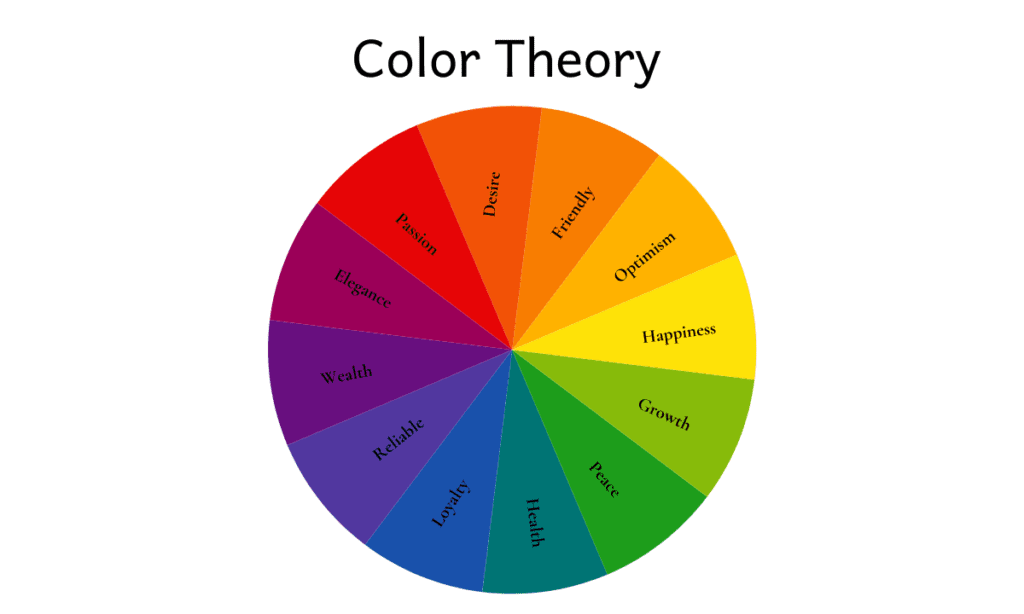When it comes to identifying your brand, customers think of your logo first. So much so, many companies such as McDonalds and Starbucks have removed all text from their logos and customers still identify the brand with no problems. With all that being said, you must choose your brand colors carefully as they have a direct influence on your brand identity.
Colors are more than just aesthetically pleasing to the eye; they’re a powerful marketing and branding tool. When determining the colors to use for your brand, you’ll want to consider traditional associations as well as how they will speak to and inspire your target audience. This holds true for both logo and overall branding designs. Color plays an invaluable role in connecting with consumers and making sure that your target market remembers your company. Colors evoke emotions, create an identity, and even influence customer behavior. In today’s competitive business landscape, a strong brand is essential for success. That’s why understanding the basics of color theory and how it applies to branding is so important.
Color Theory
Color theory is the study of how colors interact with each other and how they affect our perception. It’s based on principles from art history and psychology that have been around for centuries. Exploring color theory reveals the hidden beauty of colors and how they work together to captivate our senses. With a firm understanding of color theory, you’ll have a newfound appreciation for the way colors interact and affect our perception. Color theory is not just restricted to visual arts; it reaches far beyond that and is deeply rooted in so many aspects of life from wardrobe styling to interior design. As you begin to study and explore the wonders of color theory, you will gain a new perception on how colors interact and influence even the smallest moments in life.

Brand Color Psychology
Colors bring out a powerful range of emotion in us, so much so that we’re able to pinpoint which colors are associated with each feeling. Studies show that six particular colors are believed to draw out certain feelings:
- Red symbolizes passion, energy, urgency, excitement. Think of clearance sale signs.
- Orange conveys enthusiasm, friendliness, and cheerfulness. Two well known companies who use orange in their brand colors are Amazon and Fanta.
- Yellow sparks optimism and happiness. Cheerios and Best Buy are 2 examples of companies with yellow as their brand color.
- Green radiates peace and harmony and represents growth. It conveys the message that your company is environmentally friendly. Everyone knows the Starbucks logo. Whole Foods Market and John Deere are other popular companies with green logos.
- Blue rests with trust and loyalty. This is best for companies who want to be known for being professional and logical. No risk-takers here. Some well-known blue logos are General Electric, Dell and Chase Bank.
- Violet brings out a sense of creativity, wealth, imagination, and luxury. This color attracts customers who want to be seen as wealthy as well as those inclined towards magic and mystery. Hallmark, FedEx and SyFy all have violet in their brand colors.
- Pink is associated with femininity and sweetness. This color is used in 2 ways:
- Target female customers or
2. Their food products are sweet
Dunkin Donuts and Baskin Robbins use pink in their logos, as well as Victoria’s Secret and Barbie.
- Black is associated with being serious and sophisticated. You don’t need to look any further than Gucci, Prada and Tiffany to see this color in action.
Let color carry your message by tapping into each emotion it makes you feel. Combine them to create something truly awe-inspiring and you’ll be sure to turn heads!
Other Brand Color Considerations
In addition to understanding color theory, it’s also important to consider the best practices for branding when selecting colors for your company. This includes considering the context in which your brand will be seen (e.g., online or in print), the type of message you want to convey (e.g., modern or traditional), and any existing brand guidelines (e.g., corporate identity standards). All of these factors should be taken into account when selecting colors for your brand so that they work together to create a unified look that resonates with your target audience.
Finally, it’s important to remember why branding colors matter so much: they play an integral role in creating an identity for your company that customers will recognize and remember. By understanding color theory and following best practices for branding, you can ensure that your company stands out from the competition by creating a unique look that resonates with customers on an emotional level. Unlock a whole new world of potential with strategic brand color choice!
Automation on a Mission is an all-in-one sales and marketing platform that makes it easy to consistently brand your content. Take your company’s branding to the next level and give yourself an edge over competitors. Learn more here.

